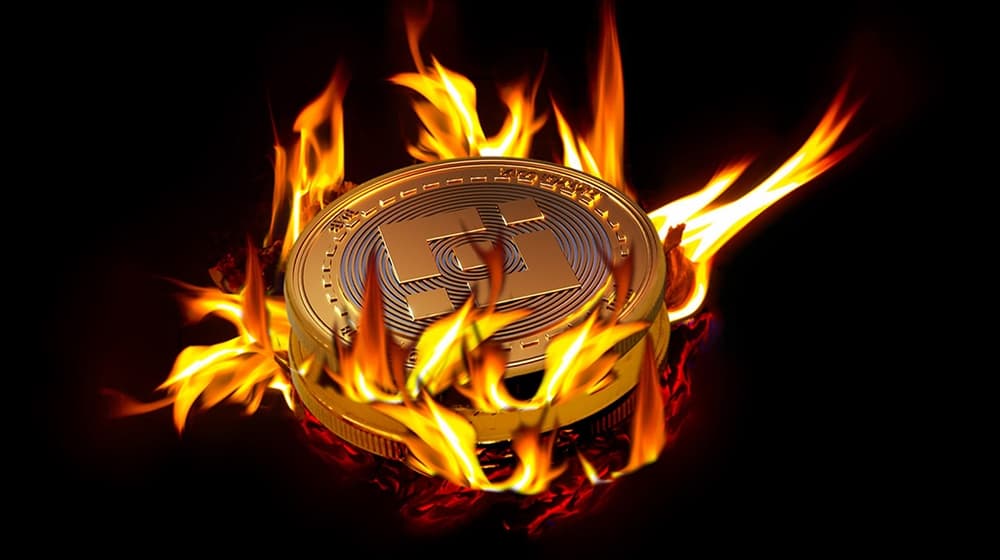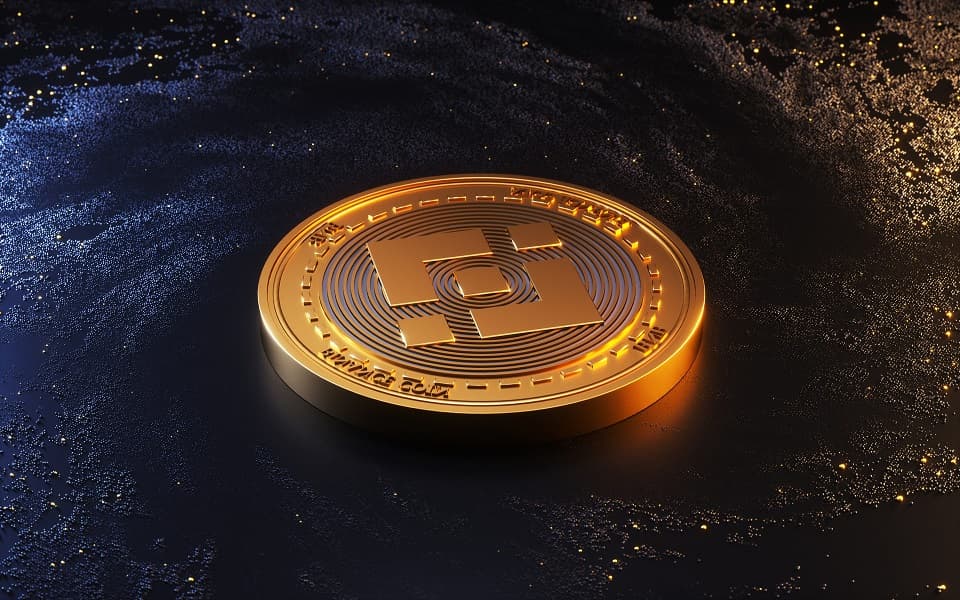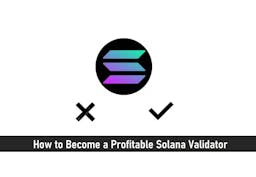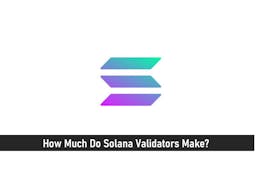
Updated: June 18, 2021

How Coin Burning Started
Coin Burning began far back. It is a process where a company buys back its stock such that the company utilizes the cash at hand to purchase shares of the common stock they had earlier sold out.
Coin burning generally is a process of rendering a coin unusable by sending it to an “Eaters Address” or a Black Hole condemning it forever.
With this, the value of those shares are reinforced and aids the improvement on the earnings per share due to the new scarcity that was done mechanically.
An example of this is the old Binance BNB ERC-20 while it was still on the Ethereum network.

As of then, Binance performed regular coin burn events using what is known as a burn function.
This event was scheduled to hold each quarter till 100,000,000 BNB are destroyed, which stands as 50% of the whole BNB ever issued.
The amount of BNB coins to be subjected to burning was determined by the number of trades that took place on the exchange during a 3-months interval.
Therefore, a Coin Burn is also aimed at the same goal of bringing down the number of tokens available in the market.
Miners and developers then plan to make the tokens still in circulation ramp-up in value and become scarce. It is also a novel way for them to earn from cryptocurrencies.
The idea is to remove coins or tokens from the market to slow down inflation in the economy or bring to a minimal level the total supply of coins.
At present, several Initial Coin Offerings (ICO) have included a coin Burning mechanism for those that are unsold when their token sale comes to an end.
Asides from that, top exchanges that have their native tokens like Binance also take part in periodic token burning to add value to their coin (Binance Coin).
SEE ALSO: What to Know About Binance and Binance’s Exchange
SEE ALSO: 10 Awesome Features of Changelly Exchange
SEE ALSO: Crypto Dusting Attacks and Clever Ways to Prevent It
How Do Digital Currency Miners And Developers Do This?
The thing is, in the digital currency world, it’s a lot of hassle to dictate the flow of coins as soon as they are mined.
So, to reduce supply, such coins or tokens are acquired and then sent to unique addresses whose private keys are unobtainable.
Digital currency wallets are built in such a way that users can create specialized addresses.
Once you don’t have access to the private key of this address, you can’t use the tokens present in it for transactions or any other purpose. Thus such coins are rendered useless.
What is Proof-of-Burn?
Now, there’s something called a Proof-of-Burn.
It’s usually referred to as a Proof-of-work system that doesn’t give out energy waste.
The Proof-of-work system allows miners to “burn” virtual currency coins and when they do that, proof should be shown for it.
Miners are also given the right to write blocks of the same quantity as the ones burnt.
The burnt coins are similar to mining rigs. When a miner burns his coins to purchase a virtual mining rig that will provide him the power to mine blocks, the more coin he has to burn.
This also means the greater the virtual mining “rig” of the miner. This process does not use up many resources (except the burned coins) and it guarantees that the network remains agile and functional.
Depending on the methods used, miners have the permission to burn a native currency or the cryptocurrency of a different chain such as that of Bitcoin (BTC).
For this, they will get a reward on the blockchain in its native currency token.
Then, users are allowed to send out transactions onto the network that will assist in burning their cryptocurrency coins. Others on the network can burn/mine using your block as leverage, of which you can take the transaction of other users and add them to your block.
Participants are given a reward for these activities (either burning their coin or for others).
To eliminate the likelihood of early adopters having an unfair advantage, the Proof-of-Burn system has set a mechanism that clamors for the regular burning of cryptocurrency coins to keep its mining power stable.
The power of such coins reduces or decays a little any time a new block is mined.
This enables the miners to carry out their activities regularly rather than an early, one-time investment.
For miners to remain in the market, they may need to invest periodically in improved types of equipment as technology advances.
SEE ALSO: How to Get Back Stolen Bitcoin from Cybercriminals
SEE ALSO: 3 Smart Ways the Police Can Crackdown Cryptocurrency Criminals
SEE ALSO: How to Flee these 10 Bitcoin Scams Now!
How Does Coin Burning Work?
If we are to look at it basically, an event of a token burn occurs through the following pattern:
- The holder of the coin calls the burn function saying that he wants to burn a certain amount of coins.
- The contract then verifies that the holder has the coins that he claims is in his wallet and the nominated amount stated is valid. Only positive numbers work on the contract.
- If such a person is found to have inadequate coins, or if the number stated is invalid (for example, 0 or – 5), the burn function cannot work.
- If the holder is seen not to have enough, the coins will be deducted from the wallet. The whole supply of that coin will be put out and then subjected to burning.
When you carry out a burn function on your coins, the coins will be destroyed for life and become impossible to recover.
Bitcoin Burning and Purpose – Examined
Coin burn is done to create new coins or tokens
This is the case of XCP (Counterparty Cryptocurrency). It was neither mined nor sold in an ICO, rather it was developed through the Proof-of-Burn system.
A certain amount of BTC was sent to special addresses and in exchange for these cryptocurrencies.
Counterparty tokens were created on the Bitcoin blockchain. With this, ICO or pre-mining is prevented and the energy spent in mining a Bitcoin is reused.
By burning these BTCs, they can’t be spent ever again, some value is therefore accrued to XCP in that process. Such as exchanging Gasoline for CNG, of which both are fuel.
Coin generation through this method also presents a fair and adequate opportunity for everyone.
Coin Burning is meant to reward coin or token holders
When coins or tokens are burnt by sending them to a special address, this is done on purpose to generate economic scarcity and token or coin holders benefit from this.
Therefore, investors are rewarded through direct dividends or by the creation of scarcity in supply, thereby revving up demand for the tokens.
This will then drive an appreciation in the price of each token or coin the investor holds.
The process functions to destroy unsold tokens or coins after a token sale or an ICO has taken place.
Coins are burnt after an ICO or token sale has taken place, or when the total coins/token set for sale are not sold out eventually. By destroying them, a fair-play is maintained.
Normally, tokens or coins go up in value once an ICO or token sale has taken place, and in a case whereby all the tokens/coins are not sold.
The company might spot a ridiculous amount of free money that can be realized by trading the tokens/coins left in the free market at a higher price.
To prevent this from taking place and maintain order and fairness, the tokens/coins remaining is sent to an unobtainable address.
To Create a Proper Consensus Mechanism
This applies to coins that use (POB) Proof-of-Burn as their consensus mechanism.
It is a special way of reaching consensus in a distributed network with the use of participants, users, and miners to burn several coins.
Add to the value of these tokens/coins
With an understanding of the basic laws of demand and supply, Coin burn introduces scarcity which is a top economic concept that provides value to any asset it affects even in the case of cryptocurrencies.
A cryptocurrency is a deflationary form of currency that has a coin supply that is mostly fixed and no additional coin can be created once it assumes its final supply count.
An example is BTC whose fixed supply is capped at 21 million BTC. If its demand increases, the price will therefore increase because the number of Bitcoin in circulation is limited.
Also, if Bitcoin goes down in supply, either through burning, forgotten Bitcoins, or private keys getting lost, their prices would as well increase.
Since the number of Bitcoins available to meet people’s demands is now less.
Therefore, Coin burn brings down the coin’s total supply in circulation by intentionally destroying it. It is a sound means of increasing and balancing coin and token valuations.
SEE ALSO: 7 Ways to Earn Bitcoin Without Spending a Penny
SEE ALSO: Top 10 Cryptocurrencies Revving Up the Market in 2021
SEE ALSO: Comparing Cryptos – Is Ethereum Becoming the New Bitcoin?
To protect against Spam
By performing a burn function, you safeguard against DDOS (a Distributed Denial of Service Attack) and avoid spam transactions from hampering the network.
The way people pay a small charge when sending BTC or pay gas for computations on a smart contract in the Ethereum blockchain, that is the same way Coin burning works.
It provides a fee for executing a transaction. But in this case, instead of paying this charge to miners to ascertain transactions, several projects integrate a burning system in which a part of the amount sent is burnt automatically.
Ripple (XRP) is an example of one such project that utilized this burning model.
It is a sign of Long-term Commitment
If Coin burning takes place in a cryptocurrency project, it is a good means of signaling a strong commitment.
Utilizing a coin burning mechanism to burn unused ICO tokens or holding periodic burning schedules (through purchasing tokens after being sold to the open market using the profits realized and later burning them) would assist by ensuring the project goes a long way.
What are the Categories of Coin Burning Available?
Coin burning is generally laid out into two distinct categories which are as follows:
1st Category – Protocol-Level Mechanism
In this category, we look at coin burning models that are already incorporated into the basic protocol layer of the blockchain.
In simple terms, all coin burning mechanisms inbuilt to the coin’s DNA is a member of this category.
2nd Category – Economic Policies
Coin burning in this category is regularly implemented as a program or economic policy undergone by the project.
It does not get incorporated into the code base or protocol layer of the project. It might also follow a consistent schedule or occur as a one-time event.
Earlier we discussed Proof-of-Burn. Now, let’s take a look at the variations in which the POB model can exist, each with their separate features:
Proof of Burn Variations
Burning Native Coins to obtain Mining Rights
Miners are required to burn a part of their coins before they can get the rights to mine blocks in this POB model.
The cost of mining here is that miners’ coins get destroyed rather than paying for high tech mining equipment or electric resources that are needed in a POW model.
This system is implemented by Slimcoin and those who mine a block successfully in this POB model will still be awarded mining rewards in recompense for their efforts.
Burning Bitcoins to produce another set of Native Coins
Coins such as XCP (Counterparty Cryptocurrency) use a POB algorithm that states the currency of Bitcoin be burnt in exchange for the exact portion of coins in the native currency, XCP.
For instance, during Counterparty’s ICO, passionate investors had to send their BTC to an Ether address for destruction to get XCP coins in exchange.
Through this, the XCP tokens newly created possessed value because an equal number of BTC was burnt to create it.
An equilibrium is known as Burn-And-Mint
A POB model that burns native tokens to get back credits (known in the past to be ‘Entry Credits’). These credits are used to preserve information in Factom’s Blockchain.
Why it is called Burn-And-Mint is as a result of the instability of Factom’s coin supply coupled with its inbuilt inflation rate.
This indicates that new coins will be generated and ‘minted’ constantly. But, if demands for Factom’s services supersede the inflation rate of the coin, then it will end out deflationary because FCT has to be burnt before we can access Factom’s services.
Note that there are huge risks when it comes to coin burning.
SEE ALSO: How to Start Investing in Bitcoin with a 100 Dollars
Final Thoughts
Coin burning keeps the circulation of cryptocurrencies regulated and most importantly retain its value.
Coin burning for Bitcoin and other altcoins are carried out more frequently than we know. As of the time of writing, Binance just completed its 13th quarterly coin burn of about $68 million worth of token to sustain and pump up the price. This it did in October 2020.
Read More




